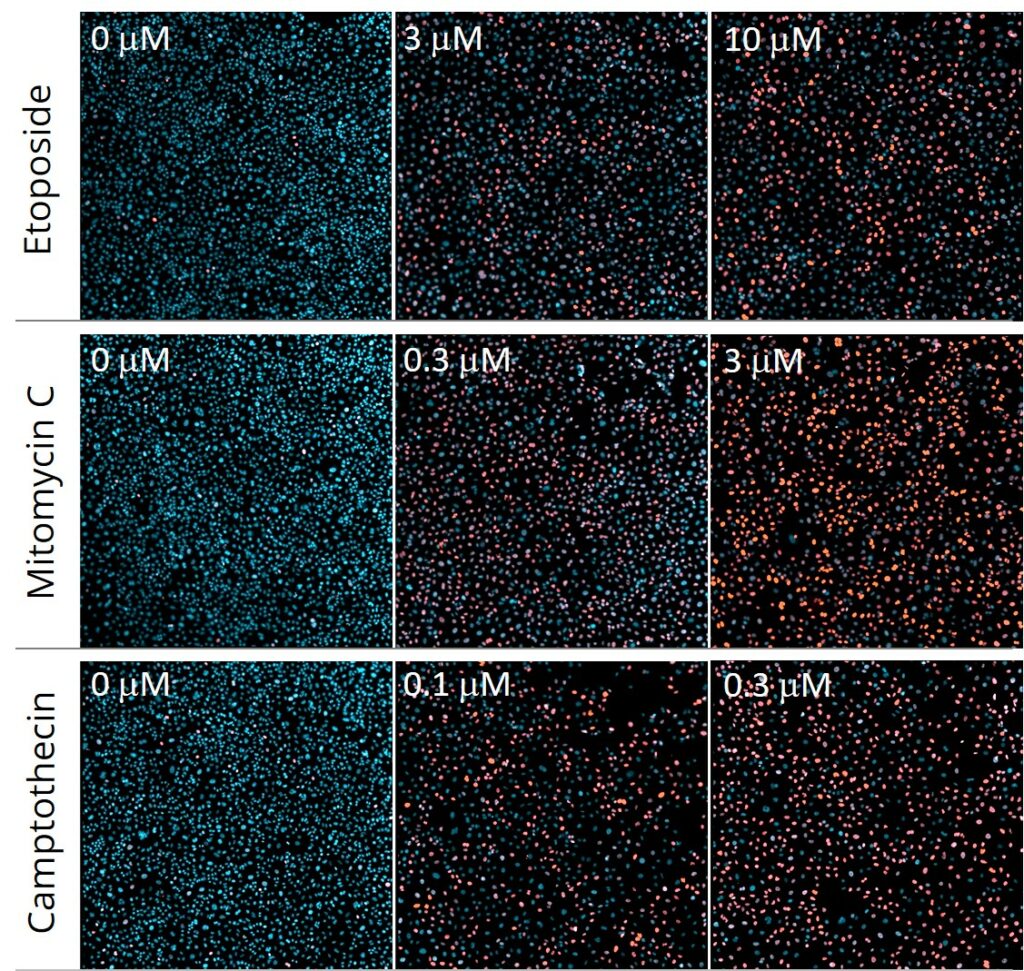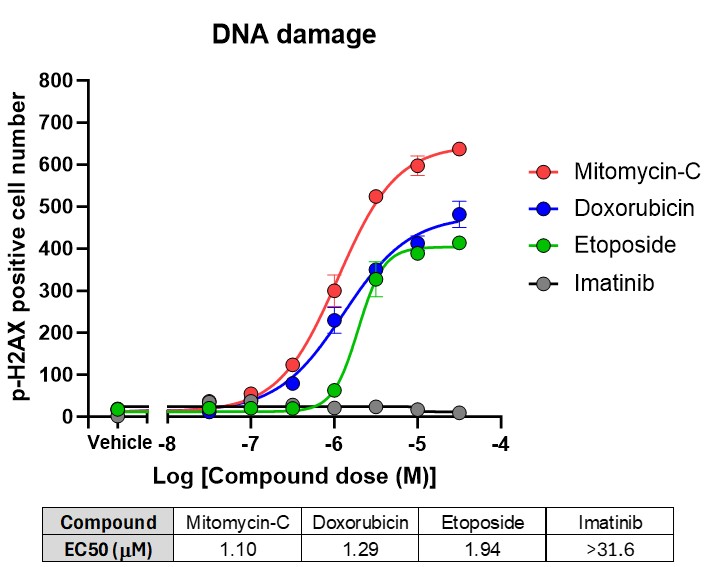DNA damage assay
Phosphorylation of histone H2AX on serine139 (pH2AX) is an early and sensitive indicator of DNA double-strand breaks (DSBs) generation and emerged as a highly specific molecular marker for quantifying compound induced DNA damage. Our robust immunofluorescence assay quantifying DNA damage suitable for evaluation of compound effects in throughput format, helps de-risking drug discovery pipeline at an early stage.
Doxorubicin Dose Response
Figure-1: Doxorubicin induced DNA damage response in A549 cells using double-stranded break marker phospho-H2AX. Cells were treated with Doxorubicin dose range from 0 to 30 mM for 24 hours. Cell imaging performed using Image Xpress pico. Fluorescently stained nuclei (Blue Hoechst stain) and nuclei positive for the DNA damage marker (Pink/ Red/orange).
Spot test & Dose Response Curves for EC50


Figure-2: (Spot test) The DNA damage response in A549 cells using double-stranded break marker phospho-H2AX. Cells were treated with tool compounds (spot test at two concentrations) for 24 hours. Fluorescently stained nuclei (Blue Hoechst stain) and nuclei positive for the DNA damage marker (Pink/Red/orange).
Figure-3: Dose response curves of tool compounds against A549 cells. A549 cells were treated with tool compounds for 24 hours. Cells stained with pH2AX antibody marker and Hoechst nuclear stain and imaged by ImageXpress-pico instrument. Data analyzed using INCARTA software. Dose response curves generated by non-linear regression (4-parameter variable slope) method by plotting the phospho-H2AX positive cell number versus tool compounds concentrations using GraphPad PRISM®. Compound EC50 was determined from dose response curves.
As assessment of drug genotoxicity at the earliest possible stage is important to improve safety and efficacy of therapeutic molecules in drug development. Here, we demonstrate quantification of DNA damage using double-stranded break marker phospho-H2AX in A549 cells, suitable for evaluation of compound dose response effects helping medicinal chemistry to understand the safety profile of a chemical series.

